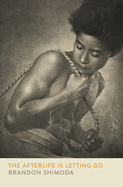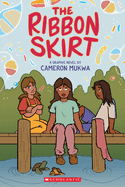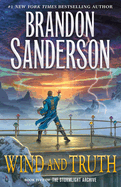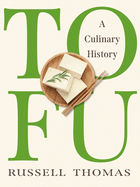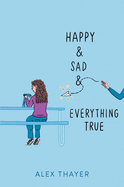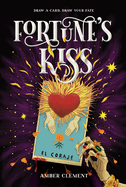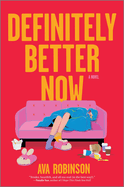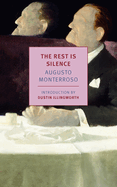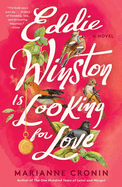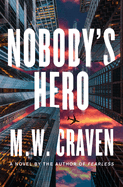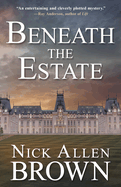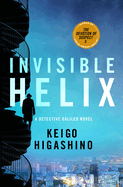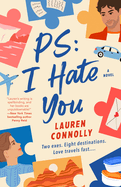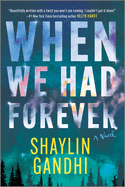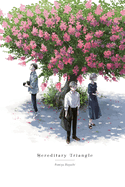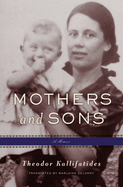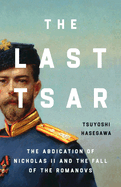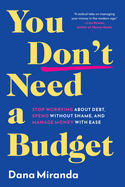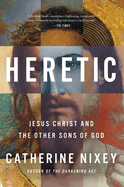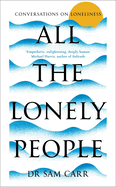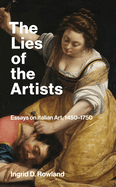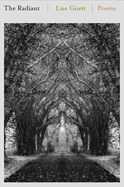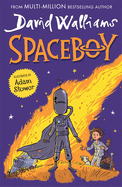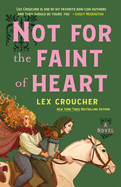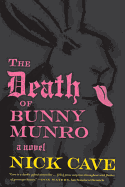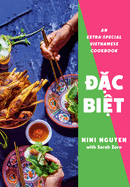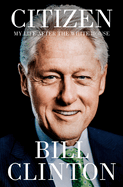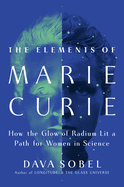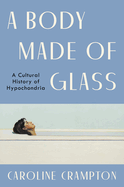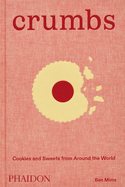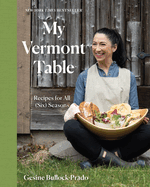Friday, January 3, 2025
Long-established subjects receive fresh, exciting consideration in the books we're recommending for our first Shelf Awareness issue of 2025. Brandon Sanderson's epic Stormlight Archive takes "great, thrilling leaps forward" in its fifth installment, Wind and Truth, which considers its expansive fantasy world from fascinating new angles. And journalist Russell Thomas has prepared Tofu: A Culinary History, a "fascinating and thorough" analysis of the bean curd staple that "bursts with compelling facts" about the food's role in culture and media. Plus, Cameron Mukwa "gracefully portrays a Native kid exploring intersecting identities and finding unexpected pillars of strength and encouragement" in Ribbon Skirt, a joyful graphic novel about a two-spirit Anishinaabe tween's process to assemble gender-affirming powwow regalia.
In The Writer's Life, Australian novelist Ella Baxter elaborates on her passion for Chris Kraus's novel I Love Dick and the earth-shattering effect Yoko Ono's Grapefruit had on her. She also breaks open "a perfect sentence" written by Amy Bloom and finds "a true master" at work.
Definitely Better Now
by Ava Robinson
Debut novelist Ava Robinson takes a close look at the bittersweet realities of sobriety in Definitely Better Now, a (late) coming-of-age story of 26-year-old New Yorker Emma and her attempts to start fresh after completing a whole year of sobriety.
For 365 days, Emma has been focused: on work and on not drinking. Ready to feel like a "fully polished, emotionally stable version" of herself after her first year in AA, she's looking forward to something like starting over. It turns out, though, that nothing magical happens on day 365 of sobriety.
Robinson has created a mid-20s heroine standing on the precipice between young adult and fully grown adult, a woman stepping into herself and into a life without alcohol. Definitely Better Now points out not just how alcohol-steeped modern American culture is, but the complexities of sober living: how rigid recovery can feel, how demanding it is, and how focused on "men of a certain age" the literature can be; as well as how to learn to trust not just a sponsor but one's own self; how to live with multiple truths--especially when some of them are ugly.
Within this, Robinson nestles a romance that feels The Office-esque, with workplace dramas, coworker gossip, employees at a company that does something vague and uninteresting, and a cute, charming guy in IT who might actually like Emma for who she is, if she can just figure that part out. Witty, funny, and full of heart, Definitely Better Now is a not-to-be-missed debut that encourages anyone, sober or not, to embrace the messy imperfections of a life worth living. --Kerry McHugh, freelance writer
Discover: A funny and heart-filled office romance nestles within a complex coming-of-age story about a 20-something New Yorker navigating sobriety and finding herself.
The Rest Is Silence
by Augusto Monterroso, transl. by Aaron Kerner
Readers who like their satire with a decidedly intellectual bent will find big laughs in The Rest Is Silence, the only novel by the Guatemalan author Augusto Monterroso (1921-2003), translated from the Spanish by Aaron Kerner. The book is a collection of writings by and about Eduardo Torres, a resident of San Blas, Mexico, who fancies himself an esteemed literary critic. Monterroso begins his portrait of this allegedly brilliant mind with a series of accounts by Torres's friends and acquaintances, who may or may not be reliable. These sources include Torres's former private secretary; Torres's brother, Luis, who claims that Torres's first word, spoken at age five, was "book"; and Torres's wife, Carmen, a patient soul who has learned "to endure his constant reading and pretensions as a ladies' man."
The bulk of this devilishly inventive fiction consists of Torres's own writings, which show with painful hilarity that he isn't as intellectual as he thinks. One doesn't have to be a book reviewer to appreciate the comedy in Torres's misunderstandings of literature, such as an essay that demonstrates his inability to grasp that Don Quixote is a parody, or an article with--how to put this?--an idiosyncratic take on the art of translation ("Would it not be preferable to avoid translation entirely, at any cost?"). And the wisdom is undeniable in such observations as "The best way to avoid death has always been to try to remain alive for as long as possible." Truer words were never written. --Michael Magras, freelance book reviewer
Discover: The Rest Is Silence, the only novel by the Guatemalan author Augusto Monterroso, is a hilarious satire about Eduardo Torres, a fictional literary critic who is nowhere near as smart as he thinks.
Eddie Winston Is Looking for Love
by Marianne Cronin
What do "the remnants of a life" add up to? That question drives Eddie Winston Is Looking for Love, a tender, inspiring novel written by English author Marianne Cronin (The One Hundred Years of Lenni and Margot).
Ninety-year-old Eddie Winston volunteers in a charity shop in Birmingham, England. He sorts through donations--odd objects and trinkets, pictures and letters--that are often from folks who've died. Before the items are "sold or burned or recycled," Eddie goes through them with care and fascination, sometimes pilfering the cast-off treasures and imagining other lives.
When Bella, a sensitive 24-year-old with pink hair who is struggling with grief after the death of her boyfriend, visits the shop to donate his belongings, she and Eddie strike up a friendship. As the two get to know each other and share their pasts, longings, and heartbreaks, Bella learns from Eddie that he doesn't have "a lot of experience with love." He has never even been kissed. Eddie's feelings for a married woman whom he met at university in the 1960s captured his heart and soul and came to define his long life. But this doesn't stop Bella from becoming determined to help Eddie finally find love via dating apps.
Vivid, evocative flashbacks braided among Eddie's frequently hilarious adventures in the dating world combine to uplift Cronin's heartfelt saga about how it is never too late to believe in the restorative, enduring power of love. --Kathleen Gerard, blogger at Reading Between the Lines
Discover: In this charming, thought-provoking novel, a multigenerational friendship leads 90-year-old Eddie Winston to finally find the love that eluded him all his life.
Mystery & Thriller
Nobody's Hero
by M.W. Craven
Ben Koenig, the former U.S. marshal who cannot feel fear and who was first introduced in M.W. Craven's Fearless, returns in the rip-roaring Nobody's Hero. A woman whom Koenig helped to disappear a decade ago resurfaces to commit a shocking double murder and a kidnapping in broad daylight in London's Hyde Park. Extreme actions were taken to get her safely off the grid all those years ago, so why would she risk her life by reappearing now?
It turns out that the United States is endangered by a plot to destroy it from the inside, this mystery woman is the only one who understands its scope, and the clock is ticking because the murders of specific targets indicate the plan has been activated. Koenig and his old handler, Jen Draper, are sent to find the woman, but they may not be able to stop the nightmarish endgame or survive their attempt to do so.
Many thriller action heroes are said to be Jack Reacher-esque, but Koenig really earns this comparison. As a protagonist, he's formidable in brawn and brains, with a dry sense of humor. At one point, Craven even mentions Reacher, as if winking at readers to show that he's aware of what they're thinking. But Koenig is his own man. He's not tough because of an imposing physique--he's just a stubborn man with a condition called Urbach-Wiethe disease, which makes him unable to feel fear. To succeed on his missions, he uses methods that are wildly over-the-top, tackling the sort of scenarios that reasonable humans wouldn't even consider, but that's what makes Nobody's Hero an entertaining escapade. --Elyse Dinh-McCrillis, reviewer and freelance editor at The Edit Ninja
Discover: Ben Koenig, a man who can't feel fear, is out to save the U.S. from a catastrophic plot in this electrifying thriller.
Beneath the Estate
by Nick Allen Brown
When a mystifying machine is discovered beneath the venerable Biltmore Estate in Asheville, N.C., the process of uncovering its puzzling provenance and purpose soon mirrors the story of its creation in Nick Allen Brown's Beneath the Estate. During a necessary renovation, workers break through a wall in the Biltmore's basement and find a contraption of levers, gears, and other mechanisms. Daniel Garrison, a professor of medieval and Renaissance studies, arrives to examine the machine and observes telltale indications of Leonardo da Vinci's influence. As Daniel investigates, a second storyline unfolds: in 1906, George Vanderbilt commissions an obscure Italian inventor, Antonio Andolini, to build the machine in secret at the Biltmore as a birthday gift for his wife, Edith.
The tandem tales of Daniel in the present day and Antonio more than a century earlier reveal not only the enigma of the machine but also the mysteries of the human heart, both to touching effect. Brown crafts winsome romances for each protagonist: Daniel falls for Penny Bradlee, a harried Biltmore kitchen worker who is struggling to care for her father, a veteran with severe PTSD, while Antonio forms a connection with Ann Phillips, an unassuming, intelligent housemaid who learns Italian so she can converse with the alluring inventor.
Brown's cheery cast of characters keeps the plot humming with entertaining acts of mischief that move the narrative toward its enchanting reveal. Complete with Da Vinci Code-esque adventures and a bounty of historical insights, Beneath the Estate is an enjoyable and worthwhile read. --Peggy Kurkowski, book reviewer and copywriter in Denver
Discover: A history professor investigating a mysterious machine discovered at the Biltmore Estate finds unexpected parallels with the past in this entertaining and ultimately touching novel.
Invisible Helix
by Keigo Higashino, transl. by Giles Murray
When the body of Ryota Uetsuji is fished out of the Tokyo Bay with a bullet in his back, his live-in girlfriend, Sonoka Shimauchi, becomes suspect number one. But there's a problem with that theory: Sonoka was out of town, traveling in Kyoto with a friend, at the time of the murder. Such is the conundrum at the heart of the twisty Invisible Helix by Edgar Award-nominated Keigo Higashino (Malice; A Midsummer's Equation), translated from the Japanese by Giles Murray.
Tokyo Metropolitan Police Chief Inspector Kusanagi and his team are further confounded when Sonoka goes on the run with the help of an older woman who's considered a family friend. Why would Sonoka flee when she has a solid alibi? To help unravel the puzzle, Kusanagi brings in his old friend and occasional police consultant, Manabu Yukawa, a physics professor known as Detective Galileo for his sharp deductive skills. Yukawa discovers that some of the case's characters are connected by events reaching back decades, and they will go to great lengths to protect those they love.
In this fifth Detective Galileo mystery, Yukawa remains as brilliant as ever, but readers also get glimpses into a more vulnerable side of the usually inscrutable professor. A case that at first seems only mildly curious to him piques his interest when it seems to have links to Yukawa's own past. Baked into the DNA of Higashino's novels is the equal import the author gives to the motivations of the characters and the resolution of the central mystery. As a result, Invisible Helix is a carefully woven treatise on guilt, betrayal, and the definition of family. --Elyse Dinh-McCrillis, reviewer and freelance editor at The Edit Ninja
Discover: Manabu Yukawa, aka Detective Galileo, must track down a young woman on the run as well as the person who killed her boyfriend in this complex mystery.
Science Fiction & Fantasy
Wind and Truth
by Brandon Sanderson
The fifth book in Brandon Sanderson's Stormlight Archive series takes great, thrilling leaps forward in the author's beloved story of swords, sorcery, and oh-so-much more. Dalinar, a complicated king, has challenged the god of hatred to a contest of champions, and the fate of the world hangs in the balance. Meanwhile, a brutal war rages across the land and numerous characters seek answers they hope might save them all.
Sanderson's writing talents are turned up to 11 for this conclusion to the first arc of the series. Multifaceted characters crash together, learning about themselves and one another in the process. The hero Kaladin's narrative is particularly intriguing as he struggles with big questions of identity and purpose. All of this takes place in a fantasy world of boggling scope, which becomes even more fascinating and intricate over the course of the novel.
One of Sanderson's strengths is the way his writing reevaluates its own dynamics, revealing new layers to established relationships. One small but thoughtful example in Wind and Truth is the portrayal of bonded spren. The helpful, fairy-like beings have been a staple of the series, bonding with several key characters and providing magical abilities and loyal support. In Wind and Truth, Sanderson (Steelheart) revisits the nature of those bonds in a manner that will leave readers deep in thought.
In addition to such developments, Sanderson fans are in for big revelations, action-packed scenes, and a thrilling conclusion to the five-book arc. --Carol Caley, writer
Discover: The fifth book in the Stormlight Archive series takes great, thrilling leaps forward in Brandon Sanderson's beloved story of swords and sorcery, with action-packed scenes and big revelations.
Romance
PS: I Hate You
by Lauren Connolly
Lauren Connolly (Healing Magic & Playboys, Rescue Me) effortlessly blends a story of shared grief with a romance of second chances in PS: I Hate You. After Maddie Sanderson spent years pining for Dominic Perry, the two shared a hookup. The next day, Dom proposed to his ex-girlfriend, and Maddie packed her bags and left Philadelphia, Dom, and her uncaring mother behind for a new life in Seattle, Wash. There, she dedicated herself to work, completing the puzzles her brother, Josh, made for her out of the pictures he took as a travel photographer, hating Dom but missing the close bonds she formed with his family.
But now that Josh has died, Maddie must follow the instructions he left behind in letters and spread a portion of his ashes in the eight states he was never able to visit. Maddie thinks that nothing could be worse than the pain of saying good-bye to her brother--until she finds out that Josh wanted someone to accompany her on the task: his best friend and the person who broke her heart, Dom. Experiencing beautiful wonders from Delaware to Alaska, Maddie and Dom fly, drive, swim, and hike their way to physical and emotional destinations with Josh as their guide. Each state brings Maddie closer to Josh's final words and to her unwanted reemerging feelings for Dom, and she is pushed to explore the beauty of the world and her not-so-beautiful emotions.
As Maddie learns the importance of letting grief out and letting love in, moments of sadness, humor, and slow-burning sexual tension make PS: I Hate You a heartbreaking and heartwarming enemies-to-lovers romance. --Clara Newton, freelance reviewer
Discover: This touching romance of shared grief and second chances follows a young woman who must scatter her brother's ashes in eight states with his best friend, who once broke her heart.
When We Had Forever
by Shaylin Gandhi
Set in the coastal town of Seagrove, Wash., Shaylin Gandhi's When We Had Forever is a sizzling marital drama with breathtaking levels of deception at its heart. Featuring scorching scenes of seduction, Gandhi's (Once Charmed, Twice Cursed) novel moves back and forth in time as it explores the measure of true love and why caring for someone means setting them free.
The story opens as 30-something Mina Drake confronts the devastating death of her husband, Michael, in a car accident six months earlier. Her soulful voice narrates the arc of their love story: he was a Seattle architect and she was a fledgling writer eager to explore the world. Theirs was an emotionally and sexually charged union, and Michael was a thoughtful lover who initially encouraged Mina's wanderlust. Alas, their bliss was short-lived. Michael became controlling and secretive following an upsetting estrangement with his twin brother, Grayson. When Mina finally meets Grayson after Michael's death, she learns that her marriage was built on a fragile, deceitful foundation. In her heartbroken condition, Mina has no business noticing her brother-in-law's striking sex appeal, and as she unravels Michael's web of lies, Grayson's own role in his brother's deception becomes painfully clear.
Mina is an artful narrator, and her story radiates with sensual energy and the fresh-scented, wooded beauty of the Pacific Northwest. As she emerges from Michael's long shadow, Mina must decide whether to trust her feelings for Grayson and, more importantly, reconcile them with a desire to finally spread her mended wings. --Shahina Piyarali
Discover: A grieving widow learns that her marriage was built on a fragile, deceitful foundation in this contemporary drama set against the natural beauty of the Pacific Northwest.
Graphic Books
Hereditary Triangle
by Fumiya Hayashi, transl. by Alethea and Athena Nibley
Manga creator Fumiya Hayashi writes and draws Hereditary Triangle, an endearing, lingering story about a "stress-free love triangle" involving three childhood friends. After his father's death, middle-aged Koutarou Fujiki has returned with his wife to his hometown in order to look after his aging mother. Being back sparks memories from youth, some more troubling than he'd like to admit. Koutarou and Touko's happy relationship is decades old, but as teens, she was also their best friend Tooru Kajiwara's first love.
Tooru, an avid photographer, took off in young adulthood to travel the world, sending sporadic missives to Koutarou, who never stopped wondering if Tooru's desertion was why Touko stayed with him. One year after Tooru's surprising death, Koutarou is convinced he's "literally seen a ghost" until he realizes Tooru's look-alike son, Kaoru, has arrived next door to clear Tooru's family house. The relationship this new trio forges during the ensuing summer provides the exact reassurances about love, friendship, and family that Koutarou, Touko, and Kaoru need to finally, freely move forward.
Twin translators Alethea and Athena Nibley, with dozens of shared manga credits, adapt Hayashi's English-language debut in an inexplicable vernacular peppered with numerous instances of "ya," "ain't," and "don'tcha" that may require a few chapters to acclimatize. Hayashi's visuals, however, instantly draw readers in. His panels range from exacting spare lines to meticulous scenes, often zoomed in from multiple points of view as if reminding readers to consider a situation from various angles. His subtly layered love story, moving back and forth in time, ensures readers a resonant read celebrating cherished memories and unexpected close bonds. --Terry Hong
Discover: Fumiya Hayashi creates a poignant, multilayered, graphically gorgeous manga featuring a two-generation love triangle spanning decades.
Food & Wine
Tofu: A Culinary History
by Russell Thomas
Humble tofu occupies center stage in journalist Russell Thomas's deep dive into the engrossing world of bean curds. Tofu: A Culinary History far exceeds the promise of its title. The book's first chapter relates some origin myths of tofu (one of the most popular claims that it was the product of an ancient king's alchemical quest), while other chapters explore tofu's role in modern media, the future of soybeans as a crop in a world increasingly impacted by climate change, and the various colorful idioms that feature tofu (for instance, in Japan, "tōfu no kado ni atama wo butsukete shine," which means "[go] hit your head on a corner of tofu and die").
The book bursts with compelling facts, such as tofu's "legacy" as a "ghost food," which stems from 18th-century Chinese scholar Wang Ji, who wrote that it's "made from the soul of beans." Readers will also learn about tofu's role as a replacement for human flesh in historical rituals. Thomas proves his dexterity in the realm of the bean curd by covering a vast amount of material that spans centuries.
Tofu is exceedingly thorough. About one-third of its page count is dedicated to a glossary, a selection of recipes, a bibliography, and nearly 40 pages of references. The best books on singular topics leave readers feeling as if they've become something of an expert, and Tofu achieves this thanks to Thomas's wide-ranging research and expert compilation. --Nina Semczuk, writer, editor, and illustrator
Discover: Tofu: A Culinary History offers a fascinating and thorough examination of its subject by exploring culture, history, language, and more.
Biography & Memoir
The Afterlife Is Letting Go
by Brandon Shimoda
Writer and poet Brandon Shimoda's The Afterlife Is Letting Go brilliantly examines the aftermath of the incarceration of Japanese Americans during World War II, particularly the effects on descendants of the imprisoned. While Shimoda's PEN Open Book Award-winning The Grave on the Wall was an intimate search for his incarcerated grandfather, Afterlife is a more expansive, polyphonic companion.
Seven of the 23 chapters, for example, are "choral," a literal gathering of voices "composed of responses [from] over 250 descendants." One chapter compiles recollections of when they first learned, through books or in school, about the incarcerations. Three descendants share teachers' reactions: Oscar nominee Renee Tajima-Peña's teacher screamingly accused her of "lying" during her report about her family's imprisonment, filmmaker Rea Tajiri's teacher asked her to confirm that imprisonment "was like a vacation for Japanese Americans," and still another descendant's teacher wept quietly through her oral report.
Multiple essays exposing suicides and murders by guards powerfully stand out. Shimoda's most intimate pieces linger longest--a talk at the Holocaust History Center in Tucson, Ariz.; crying while reading certain books with his young daughter. His longed-for grandfather also bookends this title: Shimoda Midori photographed the cover image, and he reappears at the collection's end in his own words with the remarkable discovery, 80 years later, of some 30 letters--scalpel-redacted, stamped with "DETAINED ENEMY ALIEN MAIL EXAMINED"--sent while incarcerated to his sister-in-law, "free in Utah." Personal and public history haunt throughout, and with literary wizardry, Brandon Shimoda brilliantly connects the past to ongoing acts of police brutality, mental health abuses, and inhumane detentions. Accepting injustice is never an option. --Terry Hong
Discover: Brandon Shimoda hauntingly, brilliantly spotlights an expansive community of descendants--including himself--confronting the aftermath of the unjustified incarceration of Japanese Americans.
Mothers and Sons: A Memoir
by Theodor Kallifatides, transl. by Marlaine Delargy
Mothers and Sons by Theodor Kallifatides (The Siege of Troy) is the kind of book that reverberates for the reader long after it's read. It's an inherently poignant memoir that deals with the 68-year-old author's trip from Sweden, where he lives, to his homeland of Greece to visit his 92-year-old mother. Because Kallifatides knows that any visit to his mother could be his last, he resolves to write about her and to capture her spirit. It's an act of love, and something of an act of preemptive mourning, though as Kallifatides writes, "Love is like Rome. With a bit of luck, all roads lead there."
At the same time, Kallifatides revisits his long-dead father's recollections, compiled at the author's request, and begins to translate them for his grandchildren. "They are too young to ask me to do this," he acknowledges, "and by the time they are grown-up enough to ask, I will probably not be available." The memoir oscillates between Kallifatides's father's memories, Kallifatides's memories of his father, and Kallifatides's attempt to commit a substantial depiction of his mother to literary memory.
Kallifatides is a prominent writer in his adopted country, and his elegant and evocative writing is translated beautifully from the Swedish by Marlaine Delargy. This is no tell-all memoir. " 'What is said in the home should not be repeated in the square,' the ancient Greeks used to say." Kallifatides is content to simply share his family's history through the powerful lens of love. --Elizabeth DeNoma, executive editor, DeNoma Literary Services, Seattle, Wash.
Discover: In Mothers and Sons, Theodor Kallifatides offers a moving meditation on the poignancy of loving an aging parent while the opportunity still presents itself.
History
The Last Tsar: The Abdication of Nicholas II and the Fall of the Romanovs
by Tsuyoshi Hasegawa
In The Last Tsar, Tsuyoshi Hasegawa, professor emeritus in history at the University of Santa Barbara, illuminates in exhaustive detail the abdication of Tsar Nicolas II in 1917, ending 300 years of Romanov rule. Arguing that it has "never been examined closely," he delves into the drama surrounding the abdication, as well as the lesser-known infighting among Russia's aristocratic, military, and political elite.
Hasegawa cites the usual flaws in the tsar's character that led to the Romanov downfall--his "archaic notion of autocracy" and "mythical understanding of the Russian state"--but then itemizes the "roads not taken" by Nicholas and his closest advisers to grant reforms that might have saved the monarchy. With the help of a trove of new archival information, Hasegawa calls out the actions of the Duma liberals and the military high command, two separate groups who unwittingly added fuel to the abdication fire. Although they weren't coordinated, their movements triggered a "dazzling sequence of toppling dominoes."
Hasegawa's tense, page-turning narrative captures the uncertainty and confusion reigning in the Alexander Palace of Tsarskoe Selo and the rising revolutionary fervor in Petrograd that Nicholas and Alexandra both fatally misunderstood. A critical addition to Romanov studies, The Last Tsar will be best appreciated by readers possessing some familiarity on the topic, as the overwhelming number of officials and members of royalty who appear throughout is daunting even for specialists. Still, this is an enthralling and original portrait of the abdication crisis, ripe with critical analysis. --Peggy Kurkowski, book reviewer and copywriter in Denver
Discover: The abdication of Tsar Nicholas II in March 1917 is a saga full of choices that implicates members of the military and political elite in this tense rendering of the fall of the Romanov dynasty.
Business & Economics
You Don't Need a Budget: Stop Worrying About Debt, Spend Without Shame, and Manage Money with Ease
by Dana Miranda
Personal finance journalist Dana Miranda proposes a radical idea in You Don't Need a Budget: that readers should free themselves from what she calls "budget culture." Like diet culture, Miranda suggests, budget culture keeps people busy and distracted, focused on personal actions rather than systemic issues. Miranda recommends that readers instead review their individual needs and determine how best to use their money, including not paying off debt as quickly as possible, or at all, and spending money rather than socking it away in a savings account for a rainy day.
Like an anti-Dave Ramsey, Miranda empowers readers to take control of their finances by making their money and debt work for them rather than the other way around. She encourages generosity, working less, and rejecting the notion of earning the right to live, shifting the personal finance discourse from the capitalist perspective that a person is only as good as their financial status to one that views all people as worthy.
Unlike the authors of many budgeting books, Miranda discusses government and community programs resources readers can utilize as a part of their overall financial praxis, such as the Supplemental Nutrition Assistance Program (SNAP), free or reduced-cost school lunches, and food pantries, rather than shaming and instructing readers to work multiple jobs to earn more income.
Miranda presents a refreshing way to look at and use money--embracing liberation rather than restriction--and advocates for using resources rather than hoarding wealth, asserting that these are acts of resistance to budget culture. Readers don't need to get rich, she suggests, they just need to understand that the freedom they desire isn't tied to wealth. --Alyssa Parssinen, freelance reviewer and former bookseller
Discover: You Don't Need a Budget offers financial freedom to readers in a radical way by applying the concepts of diet-culture resistance to the world of personal finance.
Religion
Heretic: Jesus Christ and the Other Sons of God
by Catherine Nixey
The word "heretic" once meant someone who had made a choice; it "comes from the Greek word haireo, which means 'I choose.' " This definition changed when Christianity came on the scene. Thus begins classicist Catherine Nixey's Heretic: Jesus Christ and the Other Sons of God, an enthralling exploration of early Christianity.
Nixey confronts the common perception that the present form of Christianity is "the Word" as Jesus lived and preached. She paints a picture of a lively religious world around the period identified as the separation between "before Christ" and "in the year of our Lord," which includes numerous accounts of other sons of gods resurrected from death as well as variations on the story of Jesus itself. Drawing on sources that include classical Greek philosophers, fifth- and sixth-century Roman legal codes, medieval theologists, and ancient gospels discovered as recently as 1945 and translated to English in 1996, Nixey demonstrates that the triumph of the current dominant form of Christianity was never inevitable. On the contrary, this form achieved its dominance by denouncing all others as "heresy," turning what was once a positive conceptualization of choice and spirited debate into one seen negatively, as blasphemy.
Nixey's tone is often cynical, matching the classical and medieval philosophers and theologians she cites, but underlying her work is a deep sadness for what might have been and is now lost to violence caused by the surviving form of Christianity's intolerance for people and books expressing divergent beliefs. Atheists and "heretics" will certainly enjoy Nixey's work, while devout Christians may also find fulfillment in learning about the origins of their faith. --Dainy Bernstein, freelance reviewer
Discover: Heretic takes readers back in time as classicist Catherine Nixey paints a vivid and detailed picture of the birth of Christianity--and the concept of heresy.
Psychology & Self-Help
All the Lonely People: Conversations on Loneliness
by Sam Carr
All the Lonely People by Sam Carr investigates how "infinite shades of loneliness" can permeate, change, and define the course of human life. Carr is a psychologist and social scientist at the University of Bath, as well as the former director of the Loneliness Project, and he brings emotional heft to true accounts that intimately explore the personal ramifications of loneliness as a universal experience.
Carr admits that an "undeniable procession of loneliness" has followed him throughout his own life. His focus on the topic was heavily influenced by interactions with his grandfather who, in his older age, struggled with deep sadness as he tried to navigate and make sense of life after his beloved wife, Carr's grandmother, died. The immensity of his grandfather's isolating grief made such an impact on Carr that he devoted his professional life to examining the relationships between constructs such as love, loss, and human connection.
With great compassion and astute insight, Carr braids his personal experiences of feeling alone with conversational case studies of ordinary people from a wide range of ages and backgrounds. He also draws on examples from popular culture, such as authors David Foster Wallace and Hanya Yanagihara and movies such as The Elephant Man. His eye-opening portraits depict different ways that loneliness manifests in people's lives and how they grapple with feelings of sadness, invisibility, and neglect due to broken relationships, relocations, mental and physical illnesses, and other traumatic life events.
Carr's probing excavation will help readers gain access to their inner lives and emotions, and to discover what it truly means to be human--and thus, to feel much less alone. --Kathleen Gerard, blogger at Reading Between the Lines
Discover: A psychologist and social science researcher compassionately presents case studies that detail how feelings of loneliness can define and chart the course of human life.
Art & Photography
The Lies of the Artists: Essays on Italian Art, 1450-1750
by Ingrid D. Rowland
Aesthetes with even a smattering of knowledge of the visual arts will find much to enjoy and rediscover in The Lies of the Artists: Essays on Italian Art, 1450-1750, a collection of erudite pieces by historian and longtime New York Review of Books contributor Ingrid D. Rowland. The title is a sly reference to Giorgio Vasari's Lives of the Artists (1550), "one of the most influential books ever written." The 15 early modern artists Rowland highlights weren't mendacious rascals but painters and sculptors devoted to demoting "the imitation of nature" in refutation of Aristotle and pursuing "the creation of true art" by "extrapolating their visions from the concrete reality of the materials they worked with and the things they saw."
Among the artists in this handsome work are Michelangelo, who worked on "a remarkable series of huge, daunting projects," including the dome of St. Peter's Basilica, which had so many structural flaws that he needed "to demolish the existing structure"; Artemisia Gentileschi, whose often violent works "throb with drama"; and El Greco, whose famously elongated figures, as in Disrobing of Christ, "have been perfectly calibrated to the monumental spaces around them." Rowland's volume is filled with learned analyses, color and black-and-white reproductions of the works discussed, and even accounts of petty jealousies, as with Venetian painter Sebastiano del Piombo, who felt such "coruscating hatred" toward Raphael that he wrote a grumpy letter to "his irascible Florentine friend Michelangelo" oozing with contemptuous envy. Readers won't feel the slightest resentment toward this excellent book. --Michael Magras, freelance book reviewer
Discover: The Lies of the Artists by historian Ingrid D. Rowland contains 15 erudite essays on painters and sculptors from the 15th through 18th centuries and their attempts to redefine true art.
Poetry
The Radiant
by Lise Goett
In The Radiant, Lise Goett's luminous third poetry collection, bodies prove disappointingly fragile, yet memory, nature, and wisdom are forces that endure.
The speaker in "After a Dark Tunnel, Uplift, Lift" references a cancer experience and imagines escaping the flesh to diffuse into the cosmos: "I a dandelion's spent head become the specular image, a mere spirit/ of the body blown out to some new seeding." Such a disembodied future evokes freedom rather than sorrow, as in "Difficult Body," when "the soul slips/ from its cerement, and goes to live like a fruit bat in the rafters.../ knowing no bounds."
Goett (Leprosarium) explores liminal moments and ponders what survives a loss. The use of the word "terminal" in "Free Fall" denotes mortality while also bringing up fond memories of the speaker's late father picking her up from an airport. Mythical allusions, religious imagery, and Buddhist philosophy weave through to shine ancient perspective on current struggles. "Wabi-Sabi" (which interprets the Japanese term as "blossoming" and "decay," denoting acceptance of transience) marks seasonal rhythms and hopes that "transformation" and "enlightenment" might accompany death.
The collection luxuriates in abstruse vocabulary--"fascicle," "haruspex," "reliquary"--and sensual descriptions of snow, trees, and colors ("yellowing into a Sauterne end-of-day"). Internal rhymes ("How could you help/ but become magma, enigma?") and alliteration ("the craniumed, crinolined brain") make for passages worth savoring. The topics vary--a medicine man's exploits, summiting Mount Everest, women's rage--but the poems are united by Goett's astute vision: "Life's all about slow drift./ What counts is not how fast you arrive/ but the weight of what you carry with you." --Rebecca Foster, freelance reviewer, proofreader and blogger at Bookish Beck
Discover: In the 25 poems of Lise Goett's luminous third poetry collection, nature's beauty and ancient wisdom sustain the fragile and bereaved.
Children's & Young Adult
The Ribbon Skirt: A Graphic Novel
by Cameron Mukwa, illus. by Cameron Mukwa
Cameron Mukwa's joy-filled graphic novel debut, The Ribbon Skirt, is a gratifying story about a two-spirit Anishinaabe kid who creates colorful regalia for the upcoming powwow.
Anang wants to make a ribbon skirt, a piece of clothing traditionally worn by cisgender girls, for the fancy dance event at the powwow. But the tween is anxious about what others will think and, at their grandparents' suggestion, seeks wisdom from "Gichigami, the lake." Gichigami (who speaks through both turtles and the water) is reassuring: "You cannot hide your joy because the hearts of others may not be open." Anang begins collecting supplies for the skirt. Nothing is purchased; rather, each needed item appears after a dream that becomes reality, such as friendly crows leaving scraps of fabric in trees. Former friend Sherry, who is temporarily living with Anang's family, tags along for the material-finding-journey but is consistently cruel about Anang's gender identity, hampering the tween's creative joy. Sherry's negativity is buoyed by humorous anecdotes, like crows playfully fighting with Sherry over the fabric, and squawking "Rude! Rude little human!"
Throughout, water spirits appear to Anang as swirling, patterned strands woven into the sea and sky; the comforting orange, blue, and red hues trail across pages and affirm both Anang's quest and identity. Back matter includes a glossary of Ojibwe terms and phrases (such as Anang's heartfelt "chi miigwech"--"many thanks"--to the spirits), notes from the author on topics depicted, a bibliography, and even a recipe. Mukwa, a two-spirit Anishinaabe educator, gracefully portrays a Native kid exploring intersecting identities and finding unexpected pillars of strength and encouragement. --Kieran Slattery, freelance reviewer, teacher, co-creator of Gender Inclusive Classrooms
Discover: In this joyous graphic novel debut, a two-spirit kid seeks guidance from friendly spirits to collect materials for gender-affirming powwow regalia.
Happy & Sad & Everything True
by Alex Thayer
Sixth grader Dee is having a hard time fitting in at school until she accidentally becomes a tween counselor to the other kids in Happy & Sad & Everything True, Alex Thayer's heartening and clear-sighted middle-grade debut.
Seventeen days ago, Dee started sixth grade in a different class than her best friend, Juniper. While Dee is hiding in the bathroom counting ceiling tiles ("It's way better to feel alone with yourself, than alone in a crowd"), Juniper has been making friends with the popular girls. When Dee overhears a bathroom conversation between an unseen group of girls calling her "Smelly. Weird. Gross," she becomes even more self-conscious. Then a voice needing support comes through the heating grate that connects the girls' and boys' bathrooms. Suddenly Dee is offering advice to kids of all ages from the anonymity of the bathroom. But can she solve her own biggest problem and restore her friendship with Juniper?
Happy & Sad & Everything True offers a nuanced, sometimes painfully realistic portrait of middle school. Dee has great ideas and a heart for helping people but is plagued by self-doubt and insecurity. The questions other kids bring her alternate between practical and deeply ethical, all while feeling true to the characters' ages. Growing up is scary, painful, and sometimes mortifying, but as Thayer shows, it can also be empowering and full of wonderful opportunities. This debut offers no sugar-coated simplicities or solutions but instead couples the trials of early adolescence with its profound moments of self-discovery and new-found community. --Kyla Paterno, freelance reviewer
Discover: Sixth grader Dee begins offering anonymous advice to classmates in this heartwarming middle-grade debut.
Fortune's Kiss
by Amber Clement
Fortune's Kiss is a riveting, radiant, and often bloody YA novel that features two young women in dire straits who compete for their hearts' desires in a gambling house with unbelievably high stakes.
Best friends Lo and Mayté made a pact as children: if the magical gambling hall, Fortune's Kiss, ever returned to Milagro, they would work together to win the ultimate prize of "life-changing fortunes and their most desperate wishes granted." Now, a decade later, Fortune's Kiss reappears, and the girls are more determined than ever. Seventeen-year-old Lo dreams of finding her mother while also escaping unwanted suitors and her abusive father. Mayté, also 17, who has watched her father drink and gamble away her family's fortune, dreams of becoming a famous painter. But the casino's stakes are enormous--losers return "a mess" (if they return at all) and the steep price of entry is "a large sum in golden coins," a person's "most prized treasure," or, rumor has it, blood. Nonetheless, Lo and Mayté try their luck. The young women enter "El Beso de la Fortuna," where they are immediately drugged, pitted against each other, and forced to play by the house's own secret--and deadly--rules.
Fortune's Kiss is Amber Clement's vivid, colorful, and intense debut, a tale steeped in a magical Latine culture, peppered with Spanish words and phrases, and chock-full of the macabre. Gripping and gory, the novel features two strong heroines who struggle to hold on to what's most important to them while at the mercy of magic, a seemingly sentient gambling house, and even each other. --Lynn Becker, reviewer, blogger, and children's book author
Discover: The vivid and colorful Fortune's Kiss features two strong, troubled heroines who join a competition staged by a treacherous, seemingly sentient gambling house.
Spaceboy
by David Walliams, illus. by Adam Stower
Spaceboy by author/illustrator duo David Walliams and Adam Stower (Grannysaurus; Little Monsters) is packed with slapstick humor, fast-paced adventure, and true friendship as it captures the drama and thrill of (highly fictionalized) life during the space race of the early 1960s United States.
Ruth, a lonely, space-obsessed 12-year-old orphan living with her mean Aunt Dorothy (who thinks all children are "revolting creatures with filthy hands and snotty noses and unruly bottoms") embarks on a life-changing adventure when a flying saucer crash-lands in their farmhouse field. Ruth immediately takes the pilot, a silver space-suited alien called Spaceboy, under her wing, protecting him even when Aunt Dorothy, a fleet of helicopters, a tiny-mustached sheriff, and men in radiation suits come after them. Events unfold rapidly. Soon, Ruth, her three-legged dog Yuri, and Spaceboy are at NASA's space center in Cape Canaveral, suggesting fixes to U.S. rocket design flaws. But big secrets are about to be revealed, throwing the trio into "DEEPEST DOO-DOO."
At every turn, Ruth, Yuri, and Spaceboy run headlong into trouble with a hilariously absurd cast of characters. Aunt Dorothy "looks like a crocodile and snaps like one too." The local sheriff wholeheartedly embraces the donut-devouring cop stereotype. And "pointlessly tall and stupidly handsome" Major Majors, head of the "Top-secret Secret Base," seeks his mother's approval above all else.
Stower's laugh-out-loud illustrations are reminiscent of Quentin Blake's artwork, while Walliams writes like a true devotee of Roald Dahl, adding in comic-book style sound effects ("CLONK!" "WHIZZ!"). There's even a moral: "DON'T BE A DORK." Simple, silly fun. --Emilie Coulter, freelance writer and editor
Discover: Spaceboy comically captures--with a distinct flavor of Roald Dahl and Quentin Blake--the drama and thrill of life during the space race of early 1960s United States.
Not for the Faint of Heart
by Lex Croucher
Author Lex Croucher follows up their acclaimed Arthurian-inspired YA novel Gwen and Art Are Not in Love with a witty, anachronistic rom-com adventure inspired by another classic story: the legend of Robin Hood.
Not for the Faint of Heart begins after Robin Hood's story ends. The Merry Men have transformed from a "fun, ballsy, anarchist autonomous collective to an organized militia" that battles the sheriff for control of Nottinghamshire. Mariel, the 18-year-old granddaughter of Robin Hood and "the youngest captain the Merry Men had ever seen," is desperate to impress her father, the Merry Men's current leader. The teen, to prove her ruthlessness, uses her squad of bandits to kidnap a healer rumored to be helping the sheriff. But the plan goes awry, and Mariel's team instead abducts 17-year-old Clem, the healer's bubbly, idealistic apprentice. On the road flaxen-haired Clem bonds with her captors but clashes with dark, shaggy-haired and pale-skinned Mariel. Clem, who idolized the Merry Men, is disappointed to find that the thieves are no longer queer "heroes in nice tights" but have "become something murkier, uglier"; Mariel is shaken by Clem's critiques of the cause to which she has devoted her life.
This novel is a breezy, comedic romp told from the perspectives of two teenage girls who have entertainingly contradictory personalities. Fans of grumpy/sunshine romances will be charmed by "stern" Mariel and "relentlessly fucking cheerful" Clem's improbable-yet-convincing enemies-to-lovers romance that unfolds during a swashbuckling quest filled with thrilling fights and chaotic heists. Mariel, Clem, and their found family of LGBTQ+ outlaws joyously embody the slogan "be gay, do crime." --Alanna Felton, freelance reviewer
Discover: The granddaughter of Robin Hood and a healer's apprentice fall for each other while battling the aristocracy in this effervescent YA historical romantic comedy.
In the Media
The Writer's Life
Reading with... Ella Baxter
 |
|
| photo: Mischa Baka | |
Ella Baxter is an Australian writer and artist. Her debut novel, New Animal, was published in 2021 by Two Dollar Radio. Her second, Woo Woo (Catapult), is about what it means to make art as a woman, and about the powerful forces of voyeurism, power, obsession, and online performance.
Handsell readers your book in 25 words or less:
Woo Woo is a dark, gothicky novel filled with wild women, art making, a disintegrating marriage, ghosts, the Internet, and fear.
On your nightstand now:
A lamp and a glass of water. I go to bed at 9 p.m. I lay down and fall asleep. No reading, no TV, just oblivion. Reading revs me up, so I can't have all that going on before bed. Many of my books I keep in the car, as I am chronically early to things, so I read while I wait. At the moment I'm reading Happy Hour by Marlowe Granados. It's on the back seat waiting for me.
Favorite book when you were a child:
Run Zebby Run Run Run by Binette Schroeder. I remember that Zebby the zebra wore high heeled boots and looked terrified on every page. The beauty of this book is that it has no words, only pictures, and so I could make up new stories each night for it. There is a page where the zebra is running from a lion, and it jumps behind a white fence for camouflage. I thought that was so clever. I remember being really impressed with the zebra for doing that.
Your top five authors:
This is a hard question for so many reasons--some of the best authors, who have created works of genius, have also been the parents of utter duds. I don't know any brilliant minds who have a flawless track record. In saying that, I love Lorrie Moore and I love Sappho, Danez Smith, Ben Lerner, Carmen Maria Machado, Kate Jennings. I love the writing and mind of Michaela Coel, but she's not an author. I love David Lynch; I admire his television work most of all.
Book you've faked reading:
Slaughterhouse-Five by Kurt Vonnegut. American Psycho by Bret Easton Ellis. Anything by Nietzsche. Keats! There would be others for sure but that period of my life, the period where I would pretend to read for some imaginary academic credit, is dead.
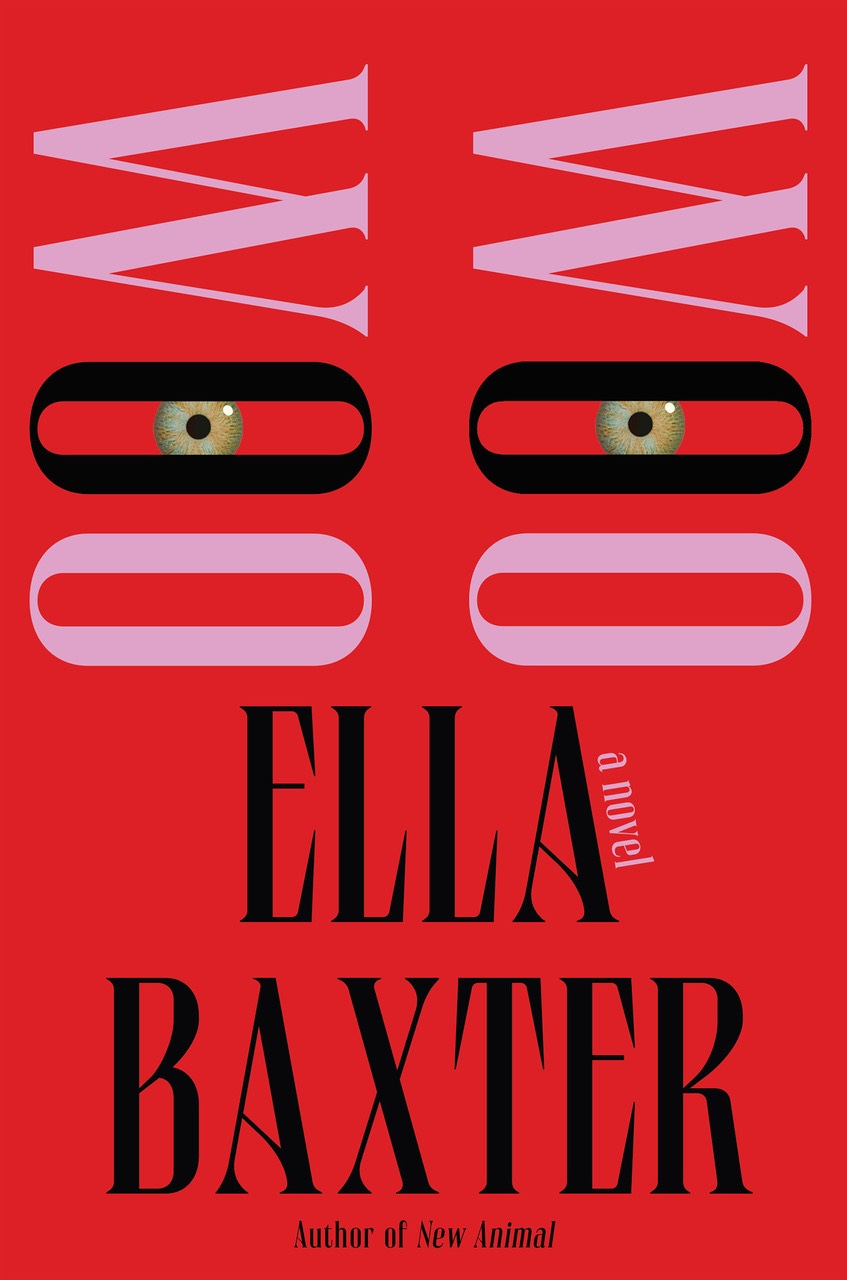 Book you're an evangelist for:
Book you're an evangelist for:
I Love Dick by Chris Kraus. It is a brilliant look at marriage and desire and artmaking. I value it highly. I reread it annually. I will never get over the genius of that story. If I love you, I have recommended you this book, probably even bought you a copy as well.
Book you've bought for the cover:
Animal Farm by George Orwell--with what looks like a nice big pig with the mustache. There was also a copy of Wuthering Heights by Emily Brontë that had some bleak, windswept painting on the front and I bought that.
Books you hid from your parents:
I hid cigarettes, not books. I was always encouraged to read widely. Books were never the enemy when I was growing up.
Book that changed your life:
Grapefruit by Yoko Ono--it was so uniquely destabilizing. At first, I thought the whole thing was a joke, but then I kept reading it over and over, and I realized it was brilliant. Not just brilliant, but experimental, and bratty, and brave, and a truly, authentically, unapologetic piece of highly eccentric work. Sometimes I open it up and have a look, close it, and wander off dumbfounded. No other book has had this effect on me. No other book has even come close.
Favorite line from a book:
There is a line that goes (something like): "she had hair so blonde she didn't need to shave her legs." It is from a collection of short stories called Come to Me by Amy Bloom, and that particular story is from the point of view of a wife, observing a woman who she suspects is having an affair with her husband. I think this is a perfect sentence, and I think about it often. This sentence is heavy with jealously. Hair, so, blonde--this alone tells us the wife is not blonde, she envies blonde, she notices blonde, and then the part about the legs. She doesn't even need to shave. The wife is seeing this new woman as a smooth-legged demigod. She's catastrophizing her beauty and his attraction to her. I love this sentence. It gives us so much of the wife. This sentence could be all I ever need to know about her. Bloom was a true master to conjure this.
Five books you'll never part with:
The thing is we have to part with everything; we cannot take books to the grave. I actually just culled a lot of books and it felt great. You can lug books around for decades, never opening them up, letting them collect dust on the shelf. I feel books should be fed into more of a barter system of giving and receiving. I feel we should all turn our bookcases over every so often--out with the old, in with the new. In my opinion, humans would do better to attach less to things, and attach more to each other.
Book you most want to read again for the first time:
A Language of Limbs by Dylin Hardcastle. I was part of an event at the Wheeler Center alongside Dylin, and I was lucky enough to hear them read an excerpt from their novel. The piece was so wildly horny and beautiful and bright. Dylin's writing is deeply evocative, sensual, and profound. I felt like setting the world on fire (in a good way) after the reading. I bought their novel the next day. I would love to read that novel, as if for the first time, again and again and again.
Book Candy
Book Candy
For the new year, Merriam-Webster looked up "9 words for beginnings."
---
Pop quiz: "Whose lunch is it anyway? Match the authors with their midday meal." (via the Guardian)
---
"Benedict Cumberbatch reads Kurt Vonnegut's letter of advice to people living in the year 2088." (via Open Culture)
Rediscover
Rediscover: Lance Morrow
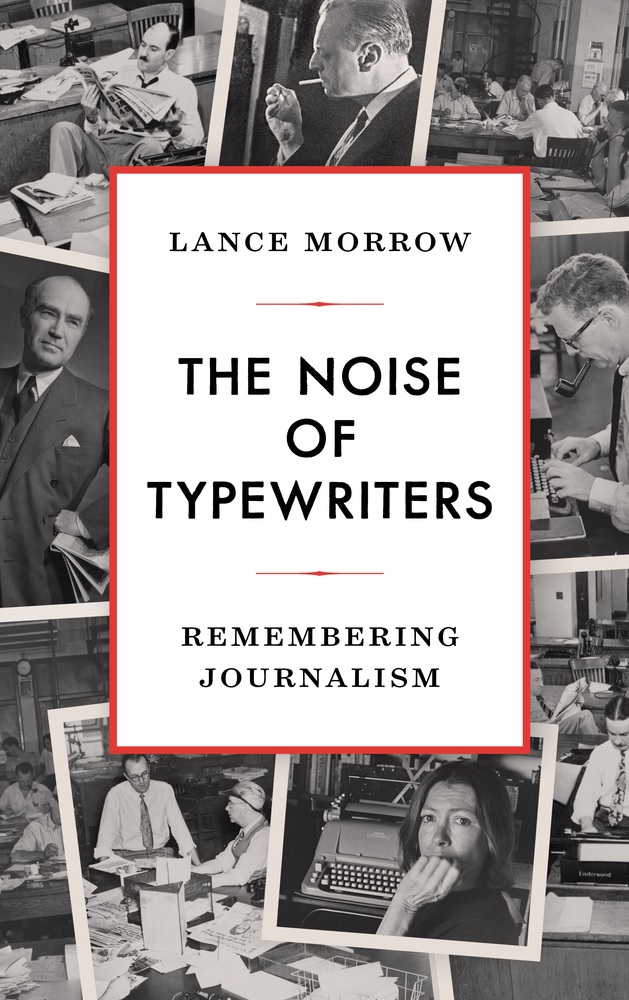 Journalist and author Lance Morrow, "whose elegant essays, often with historical sweep, appeared for two decades on Time magazine's back page when it was a significant corner of American opinion journalism," died November 29 at age 85, the New York Times reported. Hired by Time in 1965, Morrow initially wrote about celebrities, but soon began covering the riots in Detroit in 1967 and the Vietnam War. The Times noted that his many cover articles included seven "Man of the Year" (changed to "Person of the Year" in 1999) features. He started writing back-page essays in 1976 and continued until the mid-1990s.
Journalist and author Lance Morrow, "whose elegant essays, often with historical sweep, appeared for two decades on Time magazine's back page when it was a significant corner of American opinion journalism," died November 29 at age 85, the New York Times reported. Hired by Time in 1965, Morrow initially wrote about celebrities, but soon began covering the riots in Detroit in 1967 and the Vietnam War. The Times noted that his many cover articles included seven "Man of the Year" (changed to "Person of the Year" in 1999) features. He started writing back-page essays in 1976 and continued until the mid-1990s.
"If I was the jazz piano player, he was the formal classicist," said Roger Rosenblatt, whose Time essays alternated weekly with Morrow's from 1980 to 1990. "He wrote wonderful essays that were not devoid of humor or passion yet were beautifully constructed."
Morrow was a National Magazine Award finalist for his 1991 essay on evil, which he later adapted for the book Evil: An Investigation. His other books include The Chief: A Memoir of Fathers and Sons (1985), Heart: A Memoir (1995), and The Best Year of Their Lives: Kennedy, Nixon, and Johnson in 1948 (2005). His most recent book was the memoir The Noise of Typewriters: Remembering Journalism, which was published last year.
In an editorial tribute, the Wall Street Journal noted: "Lance Morrow's knowledge of American politics and society was vast, much of it based on his own experience and excellent memory. He contributed many pieces to our pages in recent years, each one written with his characteristic honesty and graceful style. America has lost one of its finest chroniclers."
"Being there is one of the imperatives of journalism," Morrow observed in The Noise of Typewriters. "Or it used to be, before the age of screens, which changed everything. Being there is still a good idea."
| Advertisement Meet belle bear! |


